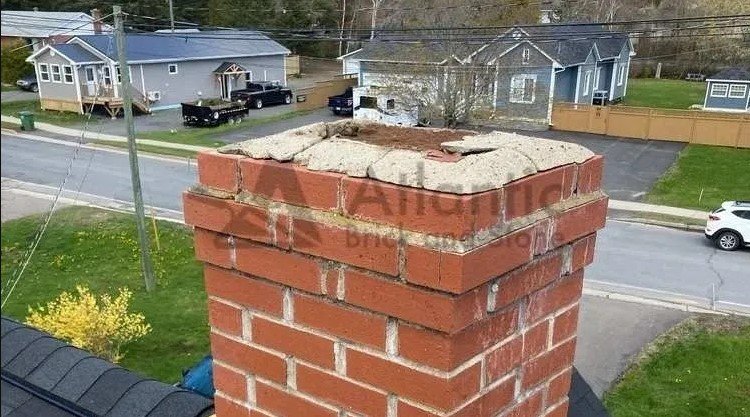Crowns are the uppermost portions of chimneys. Its purpose is to vent smoke and fumes through the flue, preventing moisture from entering. It is designed for long-term stability and durability using cement and a wire mesh reinforcement. In order to prevent water from entering the chimney, the crown should have a sloped lip. In this article, we will discuss the chimney crown and how you can protect it.

Chimney crowns are caps that cover the bricks, mortar, and stones used to build the chimney’s structure. In this way, moisture cannot penetrate the masonry of the chimney, which is at its most vulnerable point. Furthermore, it extends over the edge of the chimney by a couple of inches to divert rainwater or snow onto the roof or the ground rather than straight down to the base of the chimney, causing extra damage to the flashing.
The concrete is highly durable, but it isn’t impenetrable. Homeowners without annual chimney inspections by certified chimney services are unaware of possible chimney crown problems until they notice water inside their chimneys. Under the pressure of Mother Nature, exposed shingles can crack under the force of pounding rain, sleet, and snow. Cracks appearing on the crown of a chimney can allow moisture to enter the interior. Repairs are necessary for the crown to avoid further deterioration. Stacks in decline are at an increased risk for cracks in bricks and weaker mortar joints, which could compromise the chimney’s structural integrity. Chimney repair contractor may recommend repairing or sealing the crown of a damaged chimney, depending on the extent of the damage.
The chimney cap waterproofing sealant will wear down with time. If the crown is not sealed again, water can penetrate the concrete. In a freezing and thawing cycle, concrete cracks and moisture penetrate through the masonry.
The chimney crown is more likely to crack or break if it does not have a steep enough slope or is not made from the right materials.
It happens as homes settle and as the ground shifts. During this process, a chimney crown could break or crack.
As concrete dries and ages, the moisture content in it evaporates, causing the concrete to shrink. A crack in the crown can result from severe concrete shrinkage.
It is recommended to install a chimney cap to protect both the crown and the chimney. Basically, the cap serves as an umbrella and keeps the surface beneath dry. This cap is made of wire mesh which allows smoke and contaminants to vent while keeping small animals, pests, and debris out. In addition, a spark arrestor prevents embers from flying out of the vent and damaging the roof or surrounding area.
GET STARTED
Create stunning structures with our residential and commercial masonry services in Fredericton. From meticulous designs to the completed build, our process is professional and rewarding, and we can’t wait to build your dream with you.
Atlantic Brick and Stone, one of the best masonry contractors in Fredericton, NB
Contact
8 Muskie Street, Lower Kingsclear, New Brunswick E3E 0E7, Canada